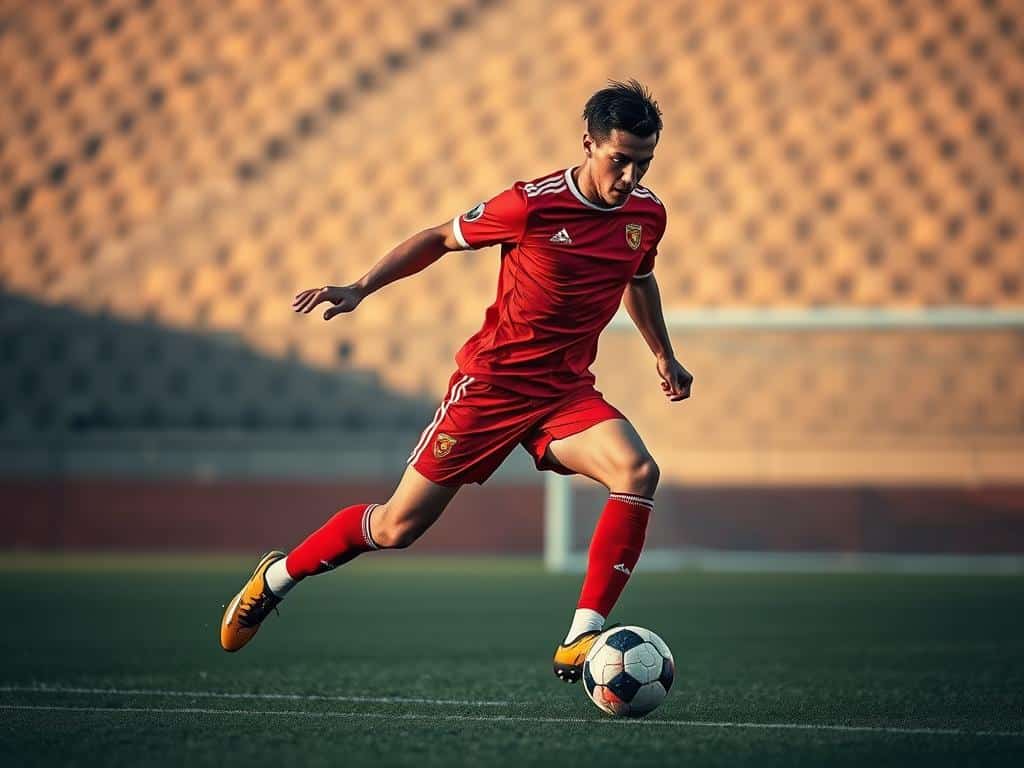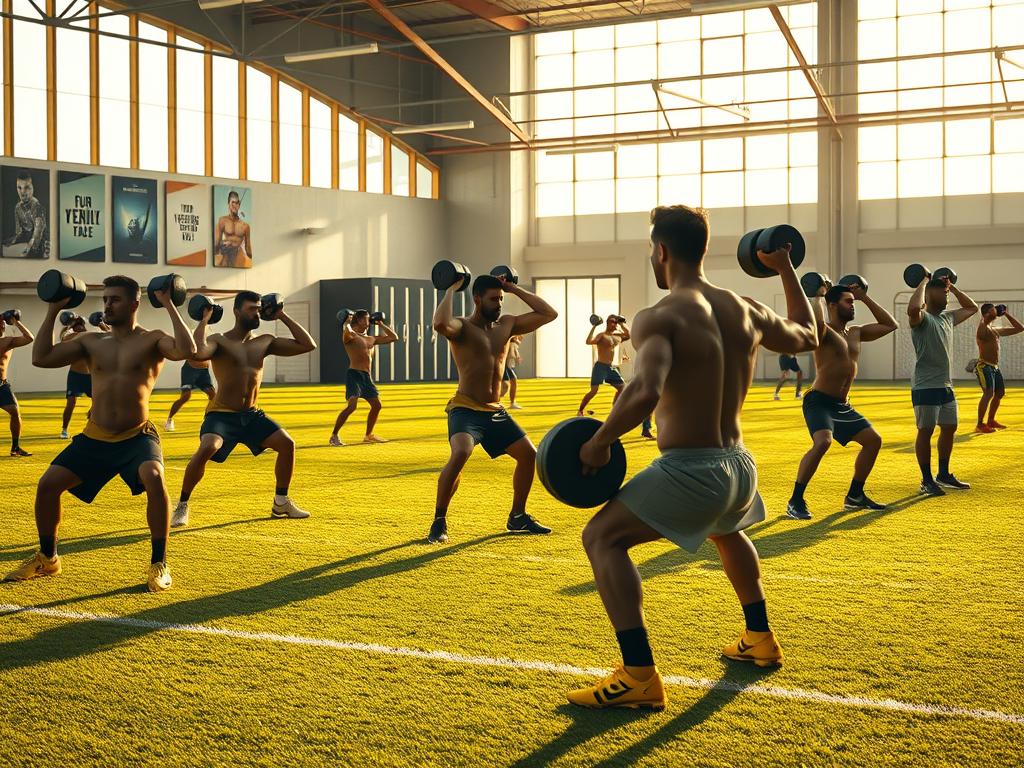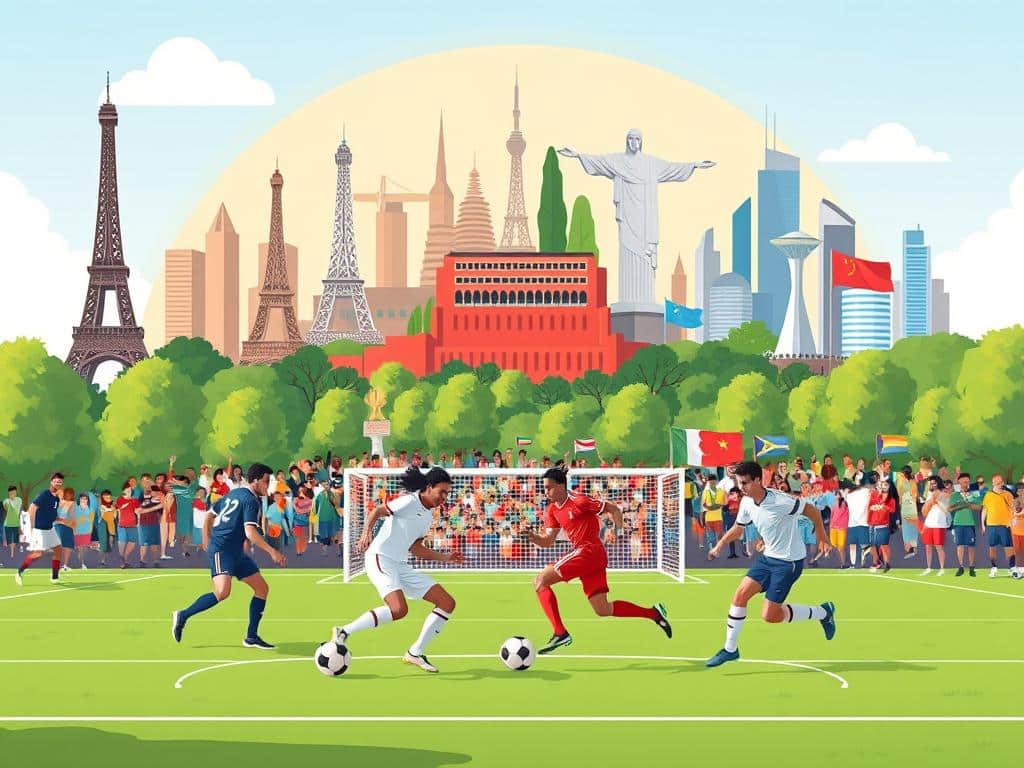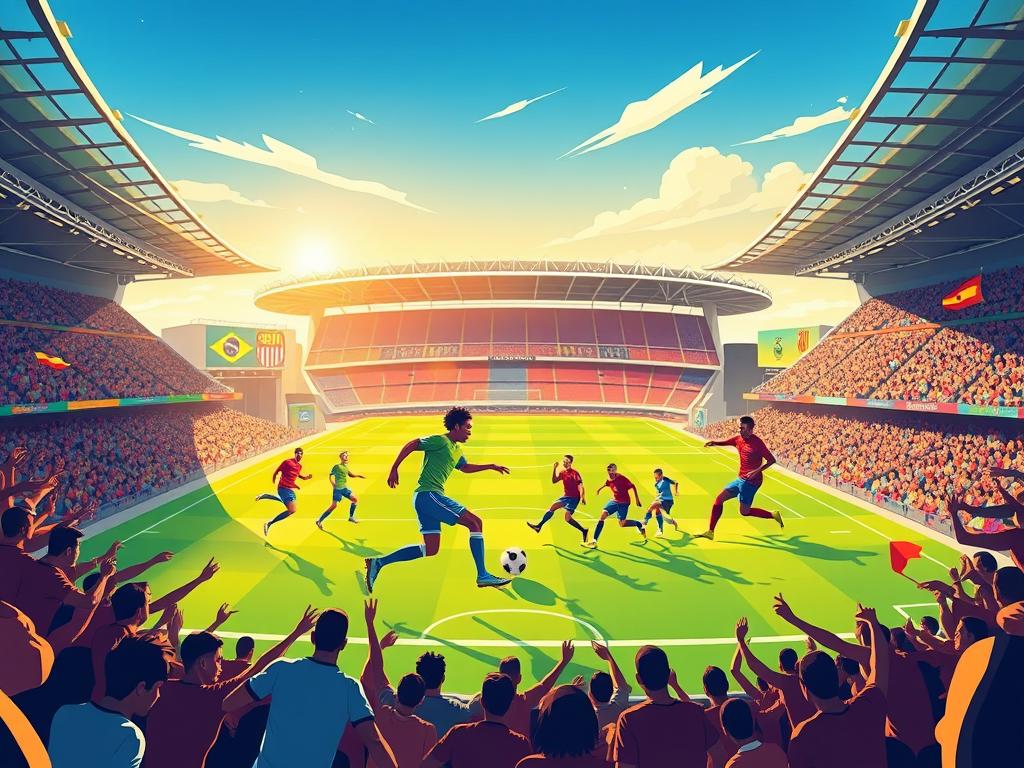You want your team to unlock space and dominate possession, and the false nine can be the key to that transformation in soccer.
This hybrid striker drops into midfield to link play, pull defenders out, and create gaps for wingers and late runners. It’s a smart way to bend the opponent’s shape and make your attackers harder to mark.
The value of the role shows up in how players move off the ball and how the team recovers possession. When done well, the approach boosts ball circulation, overloads central areas, and leads to clearer chances.
In short: expect creativity, discipline, and timing. Watch for the striker dropping, teammates filling the lanes, and the game opening up in real time.
Key Takeaways
- The false nine drops from the front to link midfield and attack.
- That movement creates space for wide players and late runs.
- Teams using this idea improve possession and chance quality.
- Success needs scanning, timing, and coordinated team movement.
- Modern tactics use the position to confuse defenders and control play.
What Is a False Nine and Why It Matters in Modern Soccer
What happens when a center-forward drops into midfield and pulls defenders out of position? You get a player who does more than score. They connect passes, drag markers, and free space for runners.
Definition: a center-forward who moves toward the ball from a high start to receive between the lines. This movement disrupts opposition marking and opens lanes for wingers and midfielders.
Origins and evolution
The idea goes back over a century — Corinthians and River Plate tried early variants. Austria’s Matthias Sindelar and Hungary’s Hidegkuti pushed the concept in the mid-1900s. In modern times, Johan Cruyff’s systems and Pep Guardiola’s use of Lionel Messi made it mainstream.
How it differs from a traditional striker
- Positioning: drops into midfield vs. staying high.
- Movement: links play and rotates, rather than solely finishing crosses.
- Build-up: creates numerical advantages centrally and invites late runs.
| Feature | Playing False Nine | Traditional Striker | Team Effect |
|---|---|---|---|
| Starting Line | High then drops | High, on last defender | Creates midfield overloads |
| Main Task | Link play and create space | Finish chances and hold up | Changes attacking patterns |
| Defensive Challenge | Opposition must step or stay | Often marked by center-backs | Forces tactical choices |
| Famous Users | Messi, Cruyff systems | Classic target men | Varies with coach |
Want to explore how other positions interact with this approach? See our guide to soccer positions for more detail.
Core Responsibilities of a False Nine: In and Out of Possession
Imagine a striker who becomes a connector — dropping, probing, and then arriving to finish. In modern soccer that change of job description can flip how a team attacks and defends.

In-possession duties
Drop between the lines at the right moment to receive the ball, scan, and link play. Your first touch must move the ball into space for teammates to attack.
Create and finish: connect quick passing combinations, play through balls, then accelerate into the box to arrive late and score from the second wave.
Out-of-possession duties
Lead the press and snap into counter-pressing to add numbers centrally. Pressing the center-backs forces rushed passing and helps your team regain possession high up the field.
Screen lanes to deny easy access to the pivot. When the trigger comes, step to the ball-side center-back to start coordinated pressure.
| Phase | Primary Tasks | Benefit to Team |
|---|---|---|
| In possession | Drop, link, pass, arrive late | Create space for wingers and improve chance quality |
| Out of possession | Press, counter-press, screen | Win ball back and disrupt opponents’ play |
| Key skills | Scanning, first touch, passing, finishing | Balance selfless movement with decisive end-product |
- Communicate with teammates so rotations stay coordinated.
- Time your drops: one perfect move opens space; one mistimed drop breaks shape.
false nine role explained: how movement disrupts defenders and creates space
A smart striker’s movement can spark a chain reaction that opens whole corridors for teammates.
When a false nine drops from the front, the opposition faces a split choice: follow or hold. If center-backs step out, wide players sprint into the gap. If they stay, the striker receives between the line and turns the play.
That dilemma matters for your team. A midfielder tracking the drop leaves a zone empty. Another midfielder can then surge forward. The result is quick, targeted creating space for finishers.
- Follow or hold: either way your attackers gain advantage.
- One bite by a center-back breaks the defensive line and frees the wingers.
- Compact back threes resist these tricks; you need speed and wider overloads versus that opponent.
| Trigger | Effect | When it works |
|---|---|---|
| Striker drops | Defenders shift, gaps open | Against flat back fours |
| Midfielder tracks | Another midfielder pushes | With coordinated rotations |
| Wide tuck | Creates confusion in defenders position | When timing and spacing are right |
Famous False Nines and What They Teach Us
When elite forwards shift between striker and creator, entire teams gain freedom to stretch defenses. Want quick examples that teach you how the idea works in practice?

Lionel Messi under Pep Guardiola
Lionel Messi received between the lines, turned at the ball, then sent wide forwards bursting into the gap. Under Pep Guardiola, wingers began very wide and attacked inside once Messi pulled a marker out. That pattern helped Barcelona dominate key matches and change how you view the position.
Roberto Firmino at Liverpool
Roberto Firmino showed how pressing and link-up play can free teammates. His work opened space for Mohamed Salah and Sadio Mané to finish. The system helped Liverpool win big trophies and proves the idea can power a high-intensity team.
Francesco Totti at Roma
Francesco Totti blurred lines between forward and midfielder. He dropped, dictated tempo, then arrived late to score. That mix of vision and finishing teaches players to be creators first, finishers second.
Cesc Fàbregas for Spain
Cesc crowded midfield in a striker-less setup. His rotations created numerical control and freed teammates like Xavi and Iniesta. The result was game control and smart use of space.
| Player | Key Trait | Team Benefit |
|---|---|---|
| Lionel Messi | Receiving between lines | Wingers exploit vacated lanes |
| Roberto Firmino | Pressing and link-up | Unleashes dynamic forwards |
| Francesco Totti | Vision and late runs | Dictates tempo, still scores |
| Cesc Fàbregas | Midfield overloads | Controls possession, opens chances |
Takeaway: study these players and you learn that situational awareness, crisp passing, and timed runs lift the whole system. Want to try this in training? Focus on rotations that free wingers and midfielders.
How to Train and Coach the False Nine Position
Coaching the drop-deep forward means drilling the mind as much as the feet. You need drills that force quick scans, tight control, and sudden forward bursts.
Essential skills to practice
Scan early and often. Make scanning a habit so the player finds space before the pass arrives.
First touch and turning. Train under pressure so the next action is clean and fast.
Passing range and timing. Practice through balls and lofted checks for teammates to exploit gaps.
Practice ideas
- Small-sided tight games to stress decision-making under pressure.
- Patterns: receive, lay off, spin, then time a late box entry and finish.
- Through-ball reps with moving targets and rotated wingers.
- VR or video sessions to boost scan frequency without physical load.
Tactical cues to coach
Teach triggers to drop deep: a pressured full-back, a marked midfielder, or a stepping center-back. Those cues tell the player when to hold or when to drop deep and create space.
| Drill | Focus | Team benefit | How to measure |
|---|---|---|---|
| Tight-area patterns | Control, first touch, quick turns | Better possession and cleaner exits | Successful passes under pressure per session |
| Through-ball sequences | Passing range, timing | Frees wingers and inside channels | Assists and chance-creating passes counted |
| Late-entry finishing | Timing, arrival speed | Increases second-wave goals | Shots on target after late runs |
| VR scan drills | Scan frequency, decision speed | Improves possession and fewer turnovers | Scan count and pass completion rate |
Track progress. Log passing outcomes, turnovers, and run timing. That shows if the player helps possession and creates space for teammates.
Conclusion
Want an attacking tweak that makes defenders hesitate and opens lanes for your wingers? The false nine shifts the balance by adding a central builder to your team. It creates dilemmas for center-backs and invites wide players to run beyond the line.
Use this position when your players can receive under pressure and your wide threats finish runs. It struggles against compact back threes or when the striker lacks the ability to turn and play quick passing.
Train scanning, timing, and rotations. Coach cues for when to press and when to hold possession. Master those details, and the false nine will change how you play soccer and tilt the game in your favor.







